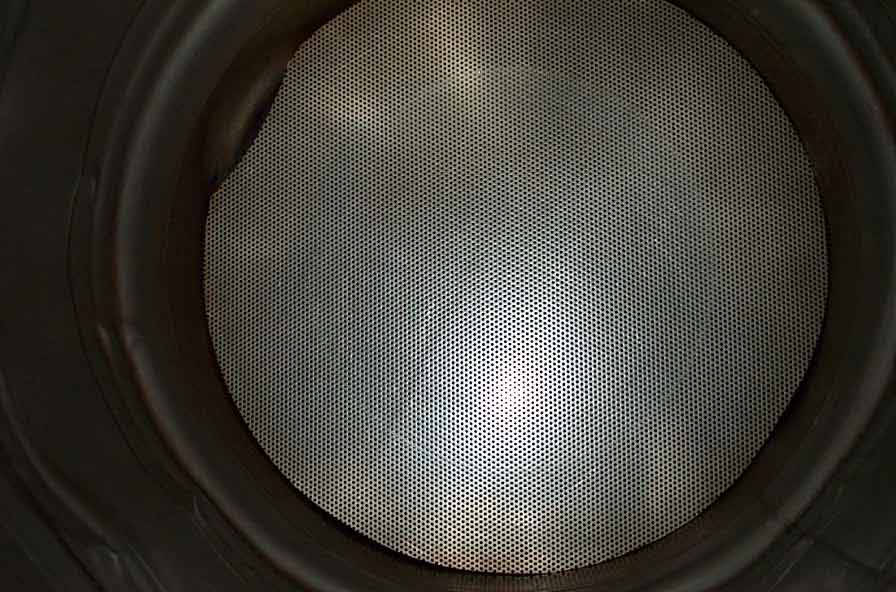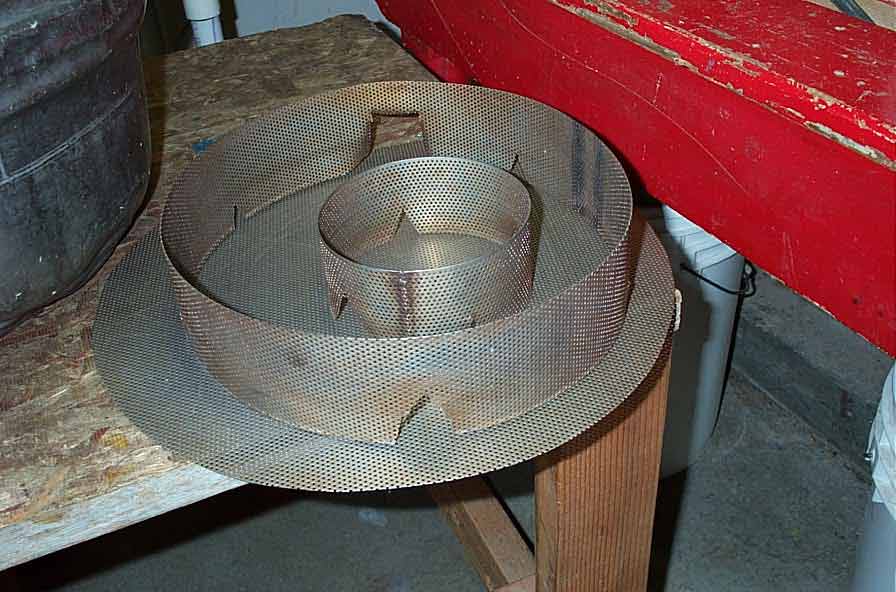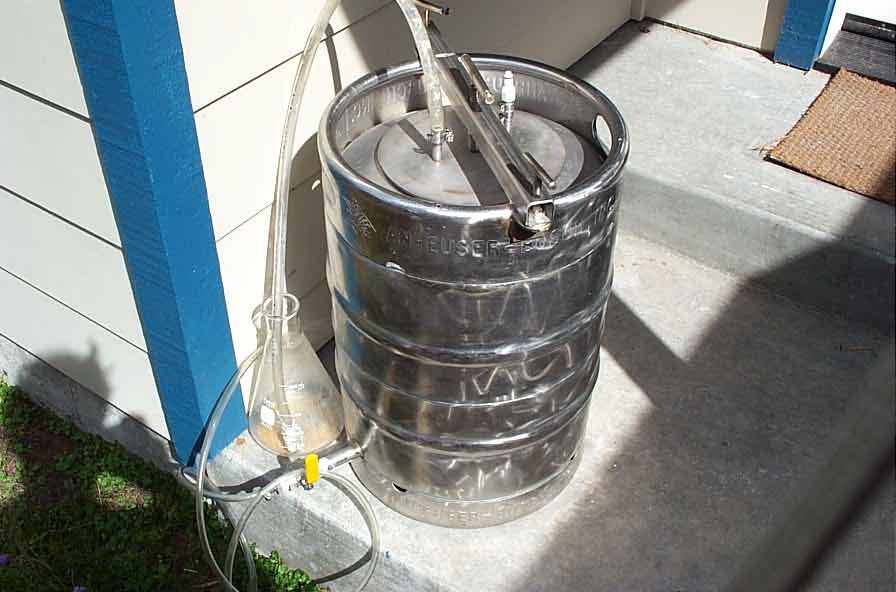|
This is David, Brenda, and Miles Lane's system in Santa Cruz. The golden gate kegs were acquired from a local microbrewery. This system uses 30,000 btu Kamp Chief burners, which just happen to have legs that fit perfectly into 1" PVC pipe. It somewhat of an unusual engineering design, but it has been in use for 10 years and still works just fine. The grain mill (lower right) is Valley Mill run with a 1/3 HP GE electric motor form the 1950's or earlier. The black box near the wall above the wort chiller is food grade pump. One disadvantage of the Golden Gate kegs is the screen in the Mash tun is about 4" from the bottom of the tun. A lot of liquid was unstirable and was getting heated much hotter than the rest of the mash. After of number of high gravity beers failed to achieve the correct final gravity (they stayed sickly sweet) I added to pump which solved the problem. I could have made a new mash tun out of a sanki keg, but the sanki has a higher profile and I would have had to modify the stand.

The bottom of the boil kettle has a copper tube with many holes drilled into the bottom to filter out whole hops used in the boil.

The mash tun has a false bottom made out of perforated stainless

The False bottom is supported by strips of the same perforated stainless rolled into a circle and tack welded.


My ferminters are modified sanki kegs with a circle cut in the lid and a flat stainless lid with a lip and a large O ring. Note the quick disconnect (white plastic piece) on the to of the keg. When I want to keg I connect a C02 tank and pressure flow the beer through a filter into the kegs. I tilt the keg on a piece of wood when kegging and all the yeast stays in the concave bottom of the keg and virtually all the beer can be removed.

When its all said and done it winds up on one of my five taps. The five kegs on the right are on the front porch waiting for someone to finish the kegs in the fridge!

One our youngest brewers

|
